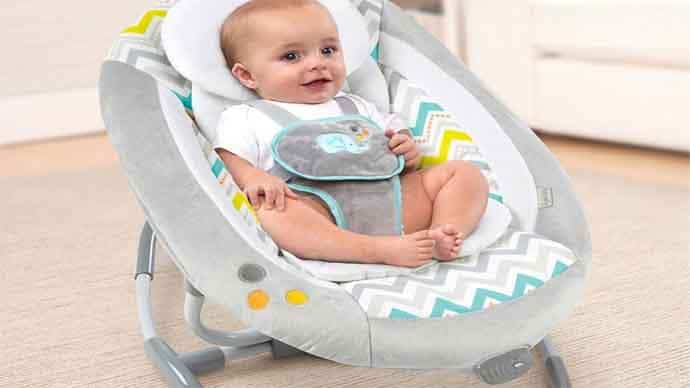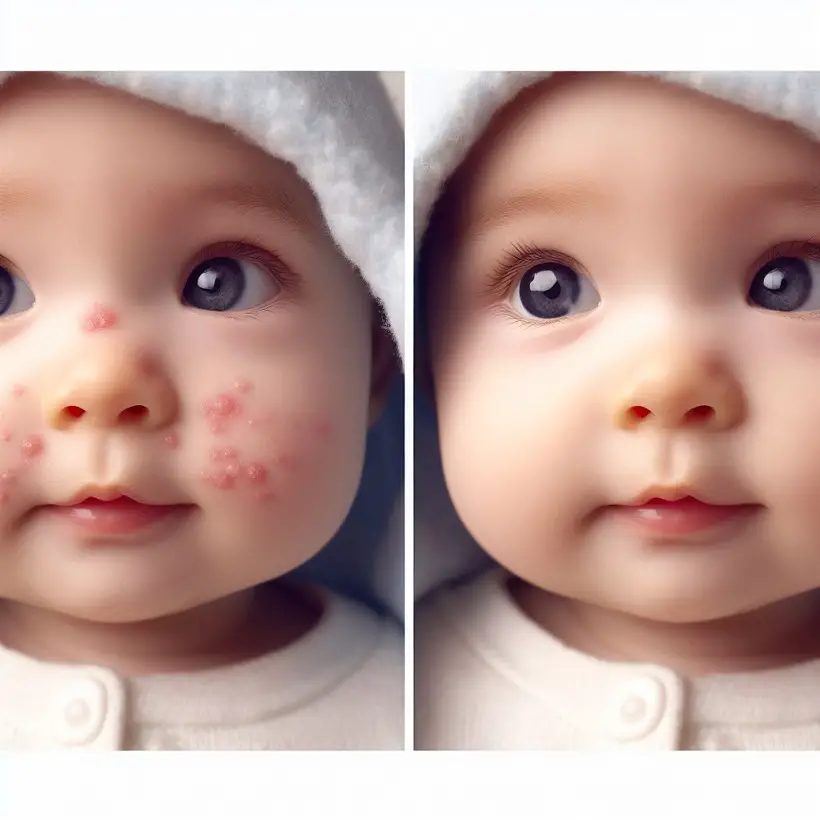As a parent, you want nothing but the best for your baby – including the fabrics used in their clothing, bedding, and other products. Bamboo and cotton are two of the most popular choices for baby fabrics, but which one is better? In this article, we will explore the differences between bamboo and cotton for baby products, to help you make the best choice for your little one.
Bamboo fabric is a relatively new addition to the market, while cotton has been a longtime favorite. Both fabrics have their advantages and disadvantages, so it’s essential to understand their properties before making a decision. Factors to consider include comfort, safety, hypoallergenic properties, and eco-friendliness.

Key Takeaways:
- Bamboo and cotton are two of the most popular fabrics used for baby products.
- Factors to consider when choosing between bamboo and cotton include comfort, safety, hypoallergenic properties, and eco-friendliness.
- Both bamboo and cotton have their advantages and disadvantages when used for baby products.
- It’s essential to understand the properties and care requirements of both fabrics before making a decision.
- Budget is also a consideration, as bamboo products tend to be more expensive than cotton.
Understanding Bamboo Fabric for Baby
If you’re considering bamboo fabric for your baby, there are a few things to know about this unique material. Bamboo is a plant that grows quickly and abundantly, making it a sustainable option for clothing and other textiles.
Bamboo fabric is known for its incredible softness, which makes it ideal for baby clothes and accessories. It’s also naturally hypoallergenic, which means it’s less likely to irritate your baby’s delicate skin.
Another benefit of bamboo fabric is that it’s highly breathable. This means that it allows air to flow through the material, keeping your baby cool and comfortable even on hot days. Bamboo fabric is also moisture-wicking, which helps to keep your baby dry and prevent rashes.
Finally, bamboo is an eco-friendly fabric choice, as it requires less water and pesticides to grow than cotton.
Understanding Cotton Fabric for Baby
Cotton is a widely used fabric for baby products due to its softness and comfort. It is a natural fiber that comes from the cotton plant, making it a popular choice for parents who are looking for a gentle and safe option for their little ones.
Cotton fabric for baby products is typically made from either organic or conventional cotton. Conventional cotton is grown using pesticides and other chemicals, while organic cotton is grown without the use of harmful chemicals. Organic cotton is a more sustainable and eco-friendly choice, but it may be more expensive.
Cotton fabric is breathable and absorbent, making it ideal for baby clothes and bedding. It is also known for its hypoallergenic properties, which is important for babies with sensitive skin. However, some cotton fabrics may be treated with chemicals during the manufacturing process, so it is important to check the label and choose products that are free from harmful substances.
Cotton fabric is machine-washable and easy to care for, which is a plus for busy parents. It is also relatively affordable, making it a cost-effective choice for those on a budget.
The Differences Between Cotton and Bamboo Fabric for Baby
While cotton is a popular choice for baby products, bamboo fabric has also gained popularity in recent years. Bamboo fabric is known for its softness, breathability, and natural anti-bacterial properties. It is also a sustainable and eco-friendly option, as bamboo is fast-growing and requires fewer resources to cultivate than cotton.
However, bamboo fabric may be less durable than cotton and may require special care when washing. It is also important to note that not all bamboo fabric is created equal, as some may be blended with other fibers or treated with chemicals. It is important to choose bamboo products that are certified as organic and free from harmful substances.
In conclusion, both cotton and bamboo fabric have their pros and cons when it comes to baby products. When choosing between the two, it is important to consider factors such as comfort, safety, hypoallergenic properties, sustainability, and price.
Pros of Bamboo Fabric for Babies
If you’re considering bamboo fabric for your baby, there are several benefits to take into account. Here, we’ll highlight the most important ones:
Softness
One of the most notable advantages of bamboo fabric is its softness. The fibers are naturally smooth and round, which creates a luxurious feel that’s gentle on sensitive skin. This is especially important for newborns, whose delicate skin needs a soft touch.
Breathability
Bamboo fabric is also highly breathable, meaning air can easily circulate through the fibers and keep your baby cool and comfortable. This is particularly useful for warmer climates or during the summer months.
Hypoallergenic properties
Bamboo fabric has hypoallergenic properties, which means it’s less likely to cause allergic reactions. This is great news if your baby suffers from eczema, asthma, or allergies.
Sustainability
Bamboo is a fast-growing and renewable resource, making it an eco-friendly choice for parents who care about the environment. It’s also grown without the use of harmful pesticides or fertilizers, making it safer for farmers and the planet.
Overall, bamboo fabric is a great choice for parents who want to prioritize their baby’s comfort, safety, and eco-friendliness. Whether you opt for bamboo blankets, clothing, or bedding, you can feel good knowing you’re choosing a material that’s gentle on your baby and the planet.
Pros of Cotton Fabric for Babies
Cotton is a widely used fabric for baby products due to its many advantages. Here are some reasons why cotton fabric is a great option for your little one:
- Softness: Cotton is known for being soft and gentle against your baby’s delicate skin.
- Breathability: Cotton is highly breathable, which means it allows air to circulate and prevents your baby from overheating.
- Hypoallergenic properties: Cotton is hypoallergenic and less likely to cause any skin irritation or allergic reactions.
- Affordability: Cotton is widely available and generally more affordable than other fabrics, making it a budget-friendly choice for parents.
“Cotton is a highly absorbent fabric, making it great for soaking up any spills or messes that your baby might make.”
In conclusion, cotton fabric offers a range of benefits for your baby, including softness, breathability, hypoallergenic properties, and affordability. When choosing cotton products for your baby, look for high-quality, organic cotton that is free from any harmful chemicals.
Cons of Bamboo Fabric for Babies
While bamboo fabric has many benefits, there are also some potential disadvantages to consider when using it for baby products.
- Less durable: Bamboo fabric may not be as strong as cotton and could wear out more quickly, meaning you may need to replace baby items more frequently.
- More expensive: Bamboo products are often more costly than cotton products, typically due to the higher cost of production.
- Special care required: Bamboo fabric cannot be washed in hot water, and may require specific care instructions to maintain its softness and durability.
- Potentially harmful chemicals: Some bamboo fabric is produced using chemicals that are harmful to the environment and could irritate baby’s sensitive skin. Look for organic bamboo fabric to avoid this issue.
Despite these downsides, bamboo fabric can still be a great choice for your baby depending on your priorities and needs. Just be sure to consider all factors before making a decision.
Cons of Cotton Fabric for Babies
While cotton is a popular fabric choice for baby products, there are some cons to consider when comparing it to bamboo.
1. Less Breathable
Cotton fabric is not as breathable as bamboo fabric, which could cause your baby to overheat. This is particularly concerning when using cotton blankets or clothing during warm weather.
2. Not Hypoallergenic
Unlike bamboo, cotton is not naturally hypoallergenic. Some babies may develop skin irritation or allergic reactions to cotton products.
3. Less Sustainable
Cotton is a highly water-intensive crop that requires a lot of pesticides and chemicals to grow. This has a negative impact on the environment and can lead to soil degradation and water pollution.
4. May Shrink and Wrinkle
Cotton fabric has a tendency to shrink and wrinkle when washed, which could affect the fit and appearance of your baby’s clothes or bedding.
While cotton does have some benefits, such as its softness and affordability, it’s important to weigh these against the potential drawbacks when choosing fabric for your little one.
Tips to Choose the Right Fabric for Your Baby
When it comes to choosing the right fabric for your baby, there are several factors to consider. Here are some tips to help you make an informed decision:
- Consider your baby’s skin: Babies have delicate skin that is sensitive to irritants. Choose fabrics that are gentle and soft on the skin to avoid rashes and other skin irritations.
- Look for breathable fabric: Choose fabrics that allow air circulation to keep your baby cool and comfortable. This helps prevent overheating and reduces the risk of Sudden Infant Death Syndrome (SIDS).
- Check the hypoallergenic properties: Choose fabrics that are hypoallergenic to prevent allergic reactions. Bamboo fabric, for example, is naturally hypoallergenic and can be a good choice for babies with sensitive skin.
- Consider sustainability: Choose fabrics that are eco-friendly and sustainable. Bamboo fabric is one such fabric that is sustainable and can be grown without the use of harmful pesticides or fertilizers.
- Compare prices: Compare the prices of different fabrics before making a decision. Cotton fabric is generally more affordable than bamboo, but it is important to factor in all the other considerations mentioned above before making a final decision.
By considering these tips, you can choose the right fabric for your baby that is safe, comfortable, and eco-friendly. Remember, your baby’s comfort and safety should be your top priority when choosing baby products, including fabrics.
Caring for Bamboo and Cotton Fabric for Babies
Proper care of your baby’s clothes and other fabric-based products is essential to keep them in good condition and ensure their safety. Here are some tips to help you care for bamboo and cotton fabric used in baby products:
Caring for Bamboo Fabric
Bamboo fabric is relatively easy to care for, but it requires some special attention to maintain its softness and durability:
| Action | Guidelines |
|---|---|
| Washing | Machine wash in cold or warm water with mild detergent. Avoid hot water and bleach, which can damage the fabric. Use the gentle cycle and avoid fabric softeners, which can clog the fibers and reduce absorbency. Hang or lay flat to dry, and avoid using a dryer, which can shrink or damage the fabric. |
| Ironing | Use a low heat setting and iron on the reverse side of the fabric to avoid damaging the fibers. |
| Stain removal | Use a mild, natural stain remover or spot-clean with a solution of white vinegar and water. Avoid using harsh chemicals or bleach, which can damage the fabric. |
Caring for Cotton Fabric
Cotton fabric is durable and easy to care for, but it can shrink and lose its shape if not properly maintained. Here are some guidelines to keep your cotton baby products in good condition:
| Action | Guidelines |
|---|---|
| Washing | Machine wash in warm or hot water with a mild detergent. Use the gentle cycle to avoid damaging the fabric. Avoid fabric softeners, which can reduce absorbency. Tumble dry on low heat or hang to dry. If possible, line drying is best to prevent shrinkage. Iron as needed on a medium heat setting. |
| Stain removal | Use a natural stain remover or spot-clean with a solution of white vinegar and water. Avoid using bleach or harsh chemicals, which can damage the fabric. |
By following these care instructions, you can help extend the life of your baby’s bamboo and cotton products and keep them looking and feeling great.
Comparing Prices of Bamboo and Cotton Baby Products
If you’re wondering about the price difference between bamboo and cotton baby products, here’s what you need to know.
Bamboo baby products are generally more expensive than cotton ones. This is because bamboo plants are not as widely grown as cotton, which makes bamboo fibers more expensive to produce. Additionally, bamboo fibers require specific chemical treatments to be turned into fabric, which also adds to the cost.
Cotton, on the other hand, is a widely grown crop, and cotton fibers are easier to process into fabric. This makes cotton baby products more affordable than bamboo ones.
However, it’s important to note that the price difference may vary depending on the brand, the specific product, and the quality of the fabric. Some high-end cotton baby products may be more expensive than low-quality bamboo ones.
When comparing prices of bamboo and cotton baby products, consider the quality, comfort, and safety features of each option. It’s also worth remembering that investing in higher-quality, sustainable and eco-friendly baby products can pay off in the long run by reducing the need for replacements and benefiting the environment.
Conclusion
After considering the key differences between bamboo and cotton fabrics for baby products, it’s clear that both materials have their advantages and disadvantages. Ultimately, the choice between bamboo and cotton depends on your priorities and preferences when it comes to your baby’s comfort, safety, and eco-friendliness.
Factors to Consider
When choosing between bamboo and cotton for your baby, consider factors such as:
- Softness and comfort: both bamboo and cotton are soft and comfortable fabrics that are gentle on a baby’s delicate skin.
- Breathability: bamboo is more breathable and moisture-absorbing than cotton, which can help regulate a baby’s body temperature and prevent overheating.
- Hypoallergenic properties: bamboo has natural antimicrobial and antibacterial properties that can reduce the risk of skin irritations and allergies, making it a great choice for babies with sensitive skin.
- Sustainability: bamboo is a more sustainable and eco-friendly fabric than cotton due to its fast growth, minimal water usage, and low environmental impact.
- Affordability: cotton is a more affordable option than bamboo, which can be more expensive due to its sustainable and high-quality features.
By considering these factors, you can make an informed decision based on what matters most to you and your baby.
Final Thoughts
Whether you choose bamboo or cotton for your baby’s products, it’s important to properly care for the fabric to ensure its longevity and safety. Always follow the washing and care instructions provided on the product labels, and handle stains and spills promptly to prevent damage or odors.
Finally, when comparing prices, keep in mind that investing in high-quality, sustainable fabrics may save you money in the long run by reducing the need for frequent replacements and minimizing environmental impact. Remember, choosing the right fabric for your baby’s products is a personal decision that can greatly impact their comfort and well-being, so take your time and weigh your options carefully.


![Can I Eat Ice Cream While Breastfeeding?[Answered]](https://www.newmomstuff.com/wp-content/uploads/2021/07/mom-eating-ice-cream.jpg)

